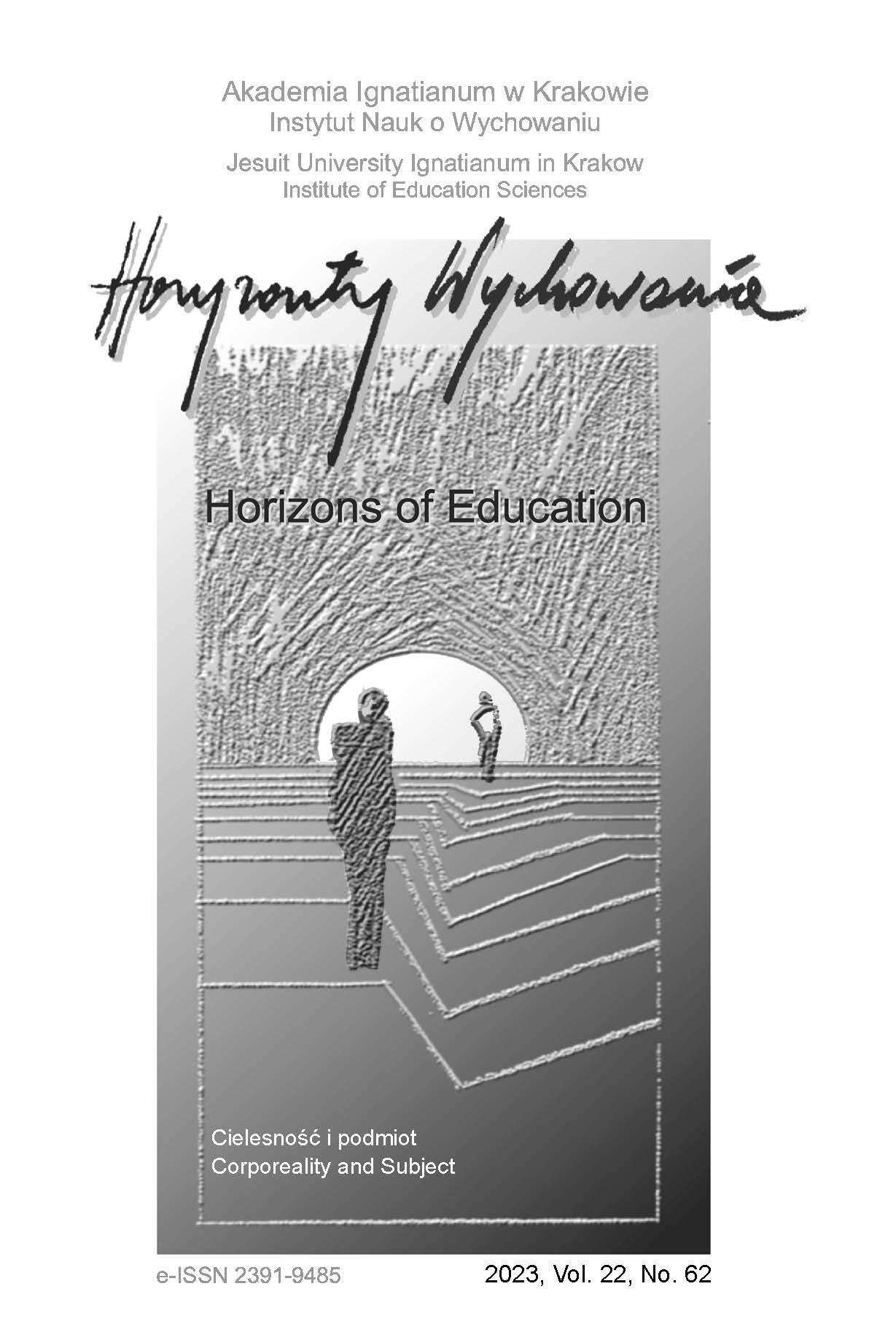Embodiment in Old Age
Abstract
RESEARCH OBJECTIVE: This article presents embodiment in relation to four areas of human agency. The findings are part of a larger project on learning to be old.
THE PROBLEM AND RESEARCH METHODS: The main research problem is understanding how strategies, actions, and attitudes toward one’s body differ among the study participants in various agency areas. The study is based on a constructivist paradigm and grounded theory methodology.
THE PROCESS OF ARGUMENTATION: Four fields of the agency have been presented on a continuum, where on one side, forces are pushing a person towards dependence, while on the other side, there is the individual’s independence. These areas were identified during the analysis of empirical data and allow for a departure from judgmental approaches to aging, serving as model areas for the functioning of an older adult . These areas were used to reflect on the embodiment of older people. Finally, the embodiment category was placed within broader structures such as discourses, concepts, and theoretical knowledge about aging and getting old.
RESEARCH RESULTS: The findings indicate the multidimensional nature of the aging body. Different strategies, actions, and attitudes towards one’s embodiment are activated depending on the individual’s life situation and social position.
CONCLUSIONS, INNOVATIONS, AND RECOMMENDATIONS: Embodiment occupies a special place in learning to be old. It is one of the primary regulators of this process. As it turns out, self-identification is primarily related to the body. Furthermore, the findings of this study allow moving away from a narrow understanding of aging as physical deterioration and decay.
References
Adams, W.C. (2015). Conducting semi-structured interviews. In J.S. Wholey, H.P. Hatry & K.E. Newcomer (Eds.), Handbook of practical program evaluation (pp. 365-377). Jossey-Bass.
Ahearn, L.M. (1999). Agency. Journal of Linguistic Anthropology, 9(1-2), 12-15.
Archer, M. (2013). Człowieczeństwo. Problem sprawstwa (A. Dziuban, Trans.). Zakład Wydawniczy „Nomos”.
Charmaz, K. (2006). Constructing grounded theory: A practical guide through qualitative analysis. Sage.
Charmaz, K. (2009). Teoria ugruntowana. Praktyczny przewodnik po analizie jakościowej (B. Komorowska, Trans.). Wydawnictwo Naukowe PWN.
Cumming, E. & Henry, W.E. (1961). Growing old: The process of disengagement. Basic Books.
Dubas, E. (2008). Istnieją dwa sposoby starzenia się: piękny i brzydki. Uroda życia przedmiotem badań andragogiki i gerontologii. In R. Konieczna-Woźniak (Ed.), Dorosłość wobec starości. Oczekiwania – radości – dylematy (pp. 71-82). Wydawnictwo Naukowe UAM.
Elder Jr, G.H. (1994). Time, human agency, and social change. Perspectives on the life course. Social Psychology Quarterly, 57(1), 4-15.
Featherstone, M. & Hepworth, M. (1991). The mask of ageing and the postmodern life course. In M. Featherstone, B.S. Turner & M. Hepworth (Eds.), The body. Social process and cultural theory (pp. 371-389). Sage.
Foucault, M. (1998). Nadzorować i karać. Narodziny więzienia (T. Komendant, Trans.). Fundacja Aletheia.
Giddens, A. (1984). The constitution of society. Polity Press.
Gubrium, J.E. & Holstein, J.A. (2008). Constructionist perspectives on aging. In M. Silverstein, V.L. Bengtson, N. Putney & D. Gans (Eds.), Handbook of theories of aging (pp. 287-305). Springer.
Hetmański, M. (2021). Metafory i ich ucieleśnienie. Wprowadzenie do problematyki. In M. Hetmański & A. Zykubek (Ed.), Metafory ucieleśnione (pp. 7-24). Academicon.
Kacperczyk, A. (2016). Społeczne światy. Teoria – empiria – metody badań. Na przykładzie społecznego świata wspinaczki. Wydawnictwo Uniwersytetu Łódzkiego.
Konecki, K. (2000). Studia z metodologii badań jakościowych. Teoria ugruntowana. Wydawnictwo Naukowe PWN.
Koralewicz, J. & Ziółkowski, M. (1990). Mentalność Polaków. Sposoby myślenia o polityce, gospodarce i życiu społecznym w końcu lat osiemdziesiątych. „Nakom”.
Powell, J.L. (2006). Social theory of aging. Rowman & Littlefield.
Rowe, J.W. & Kahn, R.L. (1987). Human aging: Usual and succesfull. Science, 237, 143-149.
Szarota, Z. (2013). Wartości służące pomyślnemu starzeniu się. In I. Adamek, Z. Szarota & E. Żmijewska (Eds.), Wartości w teorii i praktyce edukacyjnej (pp. 33-49). Wydawnictwo Naukowe Uniwersytetu Pedagogicznego.
Copyright (c) 2023 HORIZONS OF EDUCATION

This work is licensed under a Creative Commons Attribution-NoDerivatives 4.0 International License.
Authors who publish in this journal agree to the following terms:
- Authors retain the copyright to their work while granting the journal the right of first publication. The work will be simultaneously licensed under a CC BY-ND license, which permits others to share the work with proper credit given to the author and the original publication in this journal.
- Authors may enter into additional, non-exclusive agreements for the distribution of the published version of the work (e.g., posting it in an institutional repository or publishing it in another journal), provided that the original publication in this journal is acknowledged.
We allow and encourage authors to share their work online (e.g., in institutional repositories or on personal websites) both before and during the submission process, as this can foster beneficial exchanges and lead to earlier and increased citations of the published work. (See The Effect of Open Access). We recommend using any of the following academic networking platforms:





